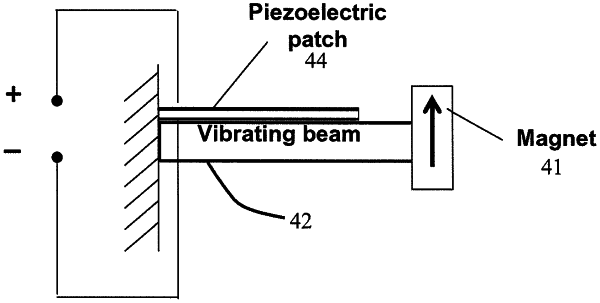| CPC H02K 35/02 (2013.01) [H02J 50/00 (2016.02); H02J 50/001 (2020.01); H02J 50/10 (2016.02); H02J 50/12 (2016.02); H02J 50/50 (2016.02); H02J 50/70 (2016.02); H02J 50/90 (2016.02); H02K 99/10 (2016.11); H02N 1/08 (2013.01)] | 18 Claims |

|
1. A wireless power transfer system, comprising:
a transmitter generating a time-varying external magnetic field; and
a receiver generating electrical power under an influence of the time-varying external magnetic field, the receiver comprising:
an electromechanical conversion element having a first axis extending from a fixed proximal end to a free distal end, the electromechanical conversion element comprising a piezoelectric material extending along at least a portion of the first axis, and
a magnet attached to the electromechanical conversion element at the free distal end, where the piezoelectric material generates a voltage in response to a torque exerted on the electromechanical conversion element by a rotation of the magnet about a second axis perpendicular to the first axis via electrodynamic coupling with the time-varying external magnetic field, wherein a movement of the electromechanical conversion element produced by the torque generates the voltage of the piezoelectric material.
|